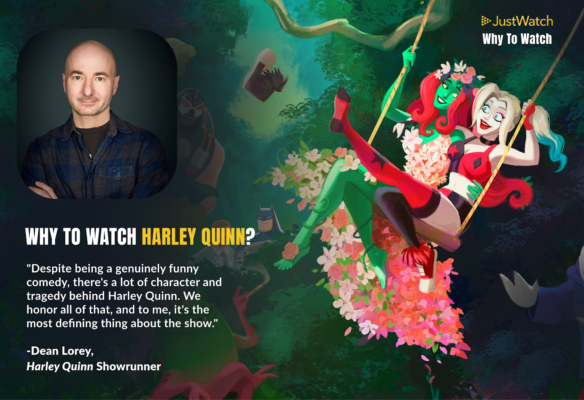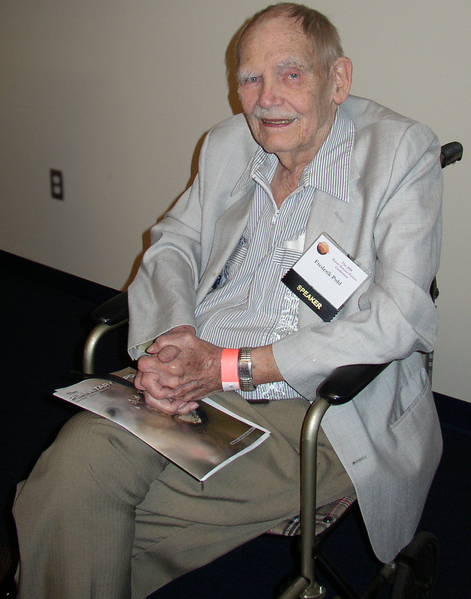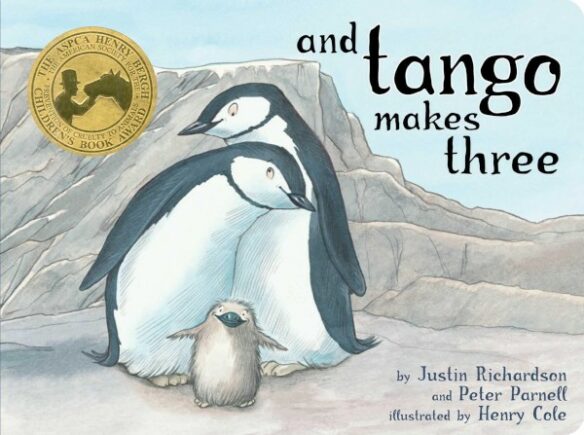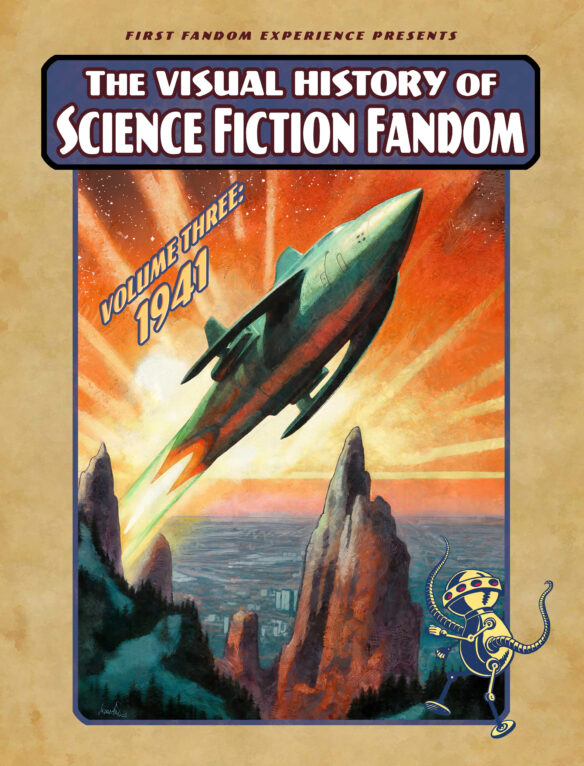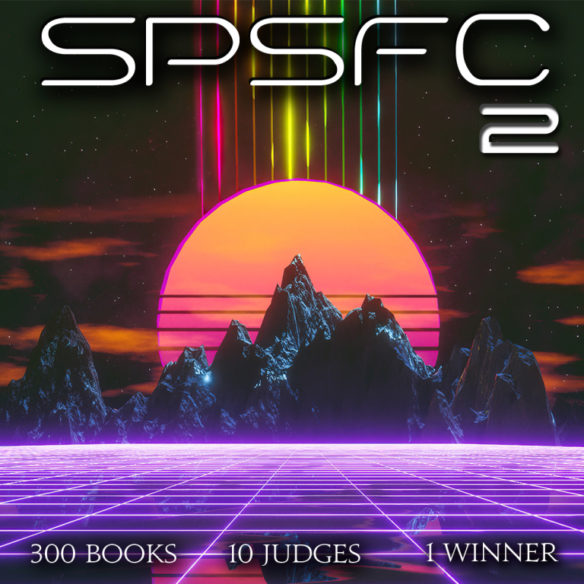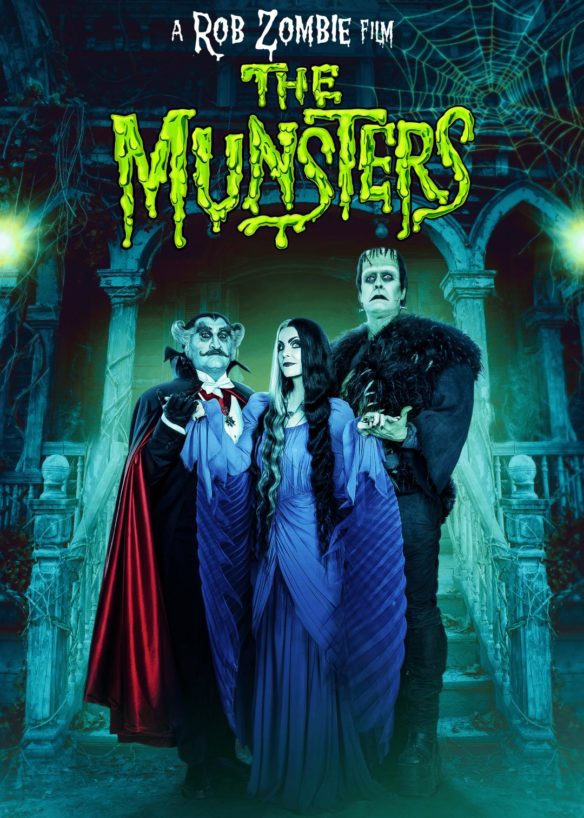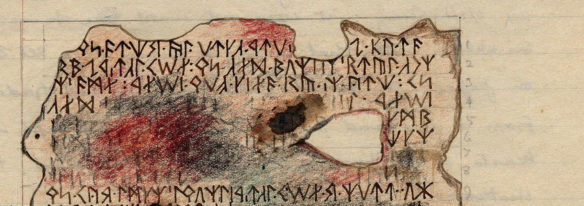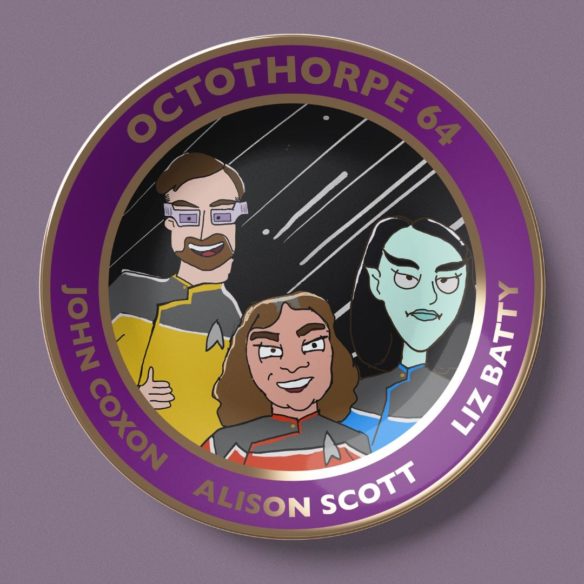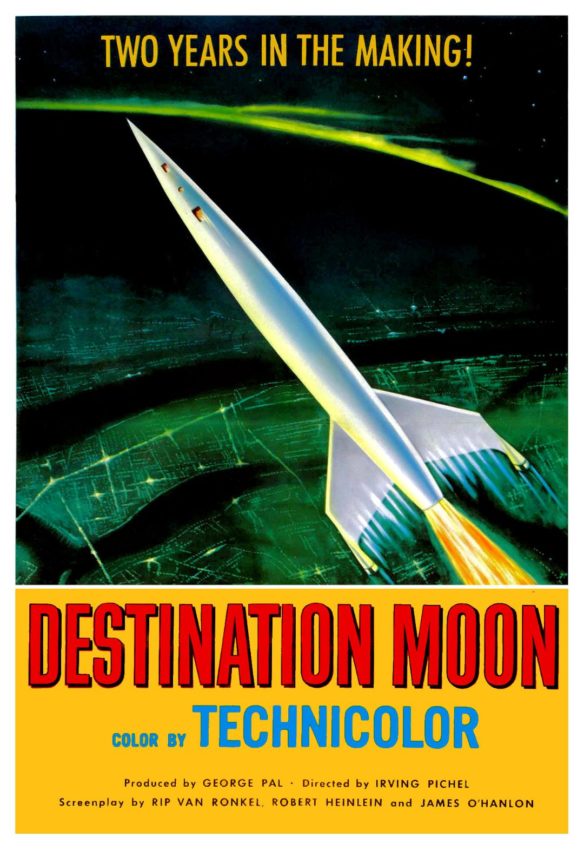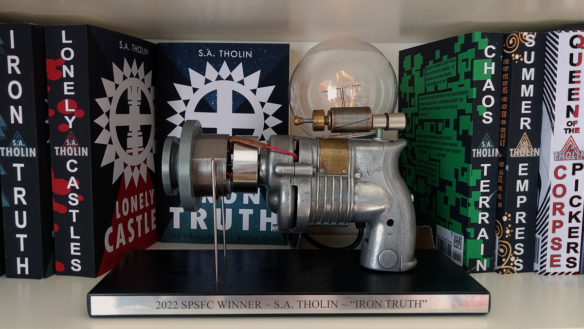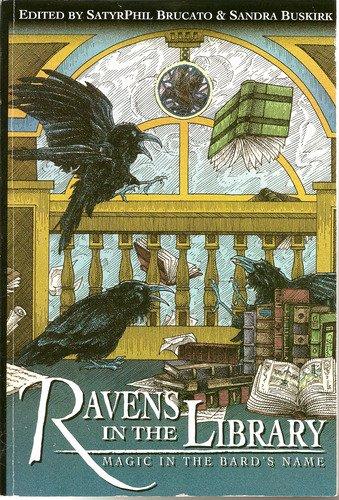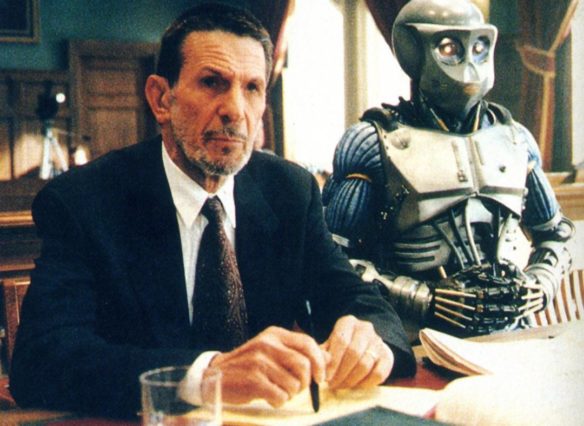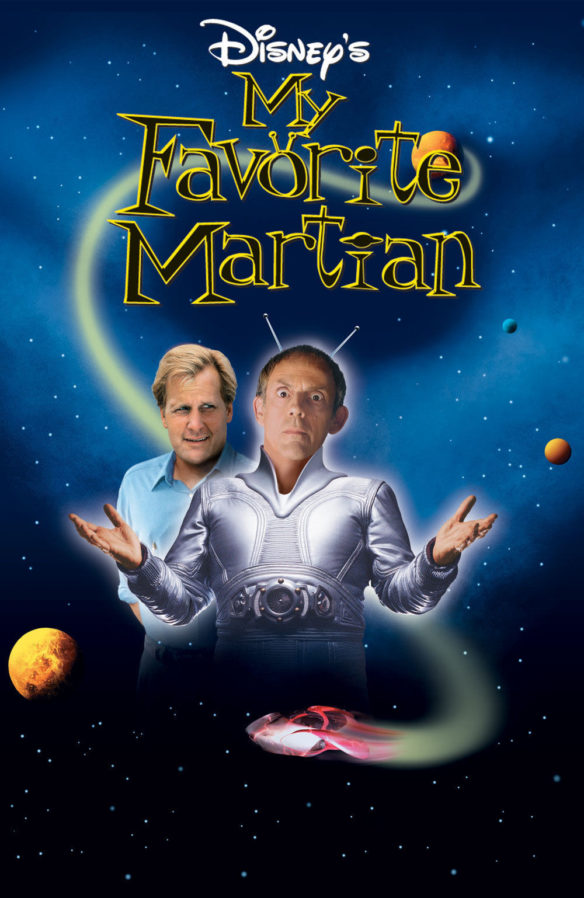(1) GROUP DROPS 2026 SMOFCON BID FOR DC. John Pomeranz, Corresponding Secretary of the Baltimore Washington Area Worldcon Association (BWAWA), yesterday announced that in response to the “current political situation” in the U.S. the group is no longer bidding to host the 2026 SMOFcon in Washington, DC.
At its meeting on March 9, the Baltimore Washington Area Worldcon Association (BWAWA) decided to end its bid to host the 2026 SMOFcon.
Since we announced the bid at SMOFcon last year, it has become clear that the current political situation in the United States would significantly reduce the willingness of fans from outside the United States to participate, even in the fully hybrid convention that we were proposing. In light of this, it seemed the best course of action was to end our bid. Unfortunately, we expect that similar problems are likely to confront any US bid for SMOFcon for the time being.
(2) SEATTLE 2025 ROOM BLOCK FILLED. The current political situation has not kept the Seattle Worldcon’s hotel room blocks from immediately filling. A newsletter sent to members today says —
We are glad to have so many of you coming to Worldcon. Unfortunately our hotel room blocks, which initially seemed large and were subsequently increased, have sold out. It is possible some of these blocks may reopen from time to time on our hotel page, but in the meantime please be aware there are 14 hotels inside of a five-block, half mile radius of the Seattle Convention Center Summit Building where rooms can be secured using a common booking service, such as Google, hotels.com, bookings.com, or kayak.com.
Many of these are just as close, or closer, than our room block hotels. It may also be possible to secure rooms at our room block hotels, but outside the room block.
(3) MEET THE SF STARS OF 1933. Next month the creators of First Fandom Experience will release “The Ultimate COSMOS: How a 1933 Serial Novel Reshaped Science Fiction”.

Why should modern readers of science fiction care about a mashed-up novel from 1933 – generally deemed terrible as a work of fiction?
Why should anyone care about a stunt pulled off by a band of early science fiction fans hoping to promote their struggling amateur publication?The creators of The Visual History of Science Fiction Fandom bring you the story of Cosmos – a remarkable serial novel from 1933, with chapters by sixteen well-known authors. Even more astonishing is the tale of how this extravagant space-opera came to be. Orchestrated by a scrappy, ambitious cadre of young fans – mostly teenagers – the creation of Cosmos is a seminal episode in the history of science fiction. The impact on the novel’s editors and authors echoed through the decades that followed.
(If you’re curious who wrote it, Fancyclopedia 3 supplies the Table of Contents here — Cosmos – The Serial Novel.)
The Ultimate COSMOS will be launched at the Windy City Pulp and Paper Convention, April 4 – 6, 2025 in Chicago. Thereafter the book will be available for purchase on the First Fandom Experience site and via print-on-demand.
(4) ABOUT THAT LIVE-ACTION REMAKE OF SNOW WHITE. “Snow White: Disney holds small-scale European premiere amid controversy” – and the BBC explains the beef.
…The movie is being released amid a debate about how the seven dwarfs are represented on screen, while Zegler has made headlines for critical comments about the original 1937 film.
The European premiere was held on Wednesday at a castle in Northern Spain, instead of a more traditional and high-profile location such as London’s Leicester Square.
Dwarfism debate
The debate around the film began making headlines in January 2022, when Game of Thrones star Peter Dinklage, an actor with Dwarfism, described the decision to retell the story of “seven dwarfs living in a cave” as “backward”.
Disney has used computer-generated dwarfs in the remake and said it would “avoid reinforcing stereotypes from the original animated film”.
But this week, other actors with Dwarfism have said they would have liked the opportunity to play the roles.
Speaking to the Daily Mail, performer Choon Tan said the decision to use CGI was “absolutely absurd and discriminating in a sense”.
“There really is nothing wrong casting someone with dwarfism as a dwarf in any given opportunity,” he said.
“As long as we are treated equally and with respect, we’re usually more than happy to take on any acting roles that are suitable for us,” he added…
(5) OCTOTHORPE. John Coxon is working, Alison Scott is plugging and Liz Batty is ghosting in Episode 130 of the Octothorpe podcast, “I Am Scalison Ott”. An uncorrected transcript of the episode is available here.

(6) OSCARS AFFECT ON STREAMING PREFERENCES. JustWatch, the world’s largest streaming guide, has analyzed how the Academy Awards influenced streaming preferences in the U.S. Following Hollywood’s biggest night, audiences turned to their favorite platforms to catch up on the most celebrated films, leading to significant shifts in streaming rankings.
While several top contenders remained popular, the post-Oscars data reveals noticeable changes in audience preferences. New titles surged in viewership, while others saw renewed interest based on award wins, nominations, and critical buzz.

*Note: Anora was not included in our ranking as it has no current streaming offers in the US, but it was the second most popular after “The Substance”
Key Takeaways from the Post-Oscars Streaming Shift
- Newcomers Enter the Rankings – The Brutalist, Wicked, I’m Still Here, and A Complete Unknown emerged in the top ten after the Oscars, reflecting fresh audience interest.
- Shifts in Viewer Attention – While Dune: Part Two, Alien: Romulus, Inside Out 2, and Gladiator II ranked highly before the awards, they were replaced by new titles post-Oscars, possibly due to shifting critical conversations and winner announcements.
- Sustained Success for The Substance & Conclave – These two films held their positions as the most streamed, proving their long-lasting appeal to audiences.
- Surging Interest in Indie and Arthouse Films – Flow and Nosferatu gained traction after the Oscars, suggesting a growing curiosity in artistic and unconventional storytelling.
(7) PRATCHETT RETROSPECTIVE. Christopher Lockett marks the tenth anniversary of the author’s death in “The Magical Humanism of Sir Terry Pratchett”, a discussion that ranges from Pratchett’s expressed views of the right-to-die to his literal characterization of Death.
…Sir Terry’s Death is thus something close to a benevolent figure: a guide into whatever afterlife the deceased’s beliefs and conscience create for them. And his pervasive presence throughout the Discworld series produces a thematic iteration on humanity as defined by mortality—which itself produces a thematic iteration on how this relationship defines a moral and ethical humanism. For one of the great allegorical gestures of the Discworld novels is an expansive humanism that extends to cover all sentient beings….
(8) TODAY’S BIRTHDAY.
[Written by Lis Carey.]
March 13, 1966 — Alastair Reynolds, 59.
By Lis Carey: Alastair Reynolds is an interesting writer—really good writer, with (what I find to be) an unfortunate tendency to write very dark stories. This means I’m stuck with reading his work very, very selectively.
Which gives me a sad.
Reynolds is Welsh, studied physics and astronomy, and has a PhD in astrophysics from University of St. Andrews. He graduated in 1991, and moved to the Netherlands to take a job at the European Space Agency, where he worked until 2004.
He started writing science fiction short stories while still a grad student, with his first publication in Interzone in 1990.

Reynolds says he doesn’t like writing stories that he doesn’t believe are within the realm of the possible, which is, no doubt, why the Revelation Space universe is truly hard sf, including relativistic space travel. He’ll depart from that stricture if he believes the story requires it, but those stories are not in Revelation Space.
I’m especially fond of the Prefect Dreyfus Emergencies, a subseries within the Revelation Space universe, which I otherwise avoid. Tom Dreyfus is a field prefect, part of the Panoply, a sort of let’s not call them police officers, charged with ensuring that each of the 10,000 or so habitats within the Glitter Band has reliably functioning, untampered-with democracy. As long as they are properly functioning democracies, the habitats can have any set of laws they choose to have.
A vital part of that is keeping the machines that tabulate votes working smoothly and ensuring that they’re not tampered with. But if they didn’t also have rogue AIs, charismatic preachers against Panoply, a mysterious contagion that seemingly leaps all protective measures, and bigotry against uplifted, genetically modified pig people, where would the fun be? Over the three books published (Aurora Rising, Elysium Fire, and Machine Vendetta, it’s intricate, layered, has very well-developed characters, and plots that really don’t let go.
Another Reynolds work I’ve enjoyed is Eversion, in which a sailing ship in the 1800s crashes on the coast of Norway, in the 1900s a Zeppelin runs into serious difficulty in crevasse in the Antarctic, and in the far future, a spaceship visits an alien artifact. Dr. Simon Coade is the physician on these voyages, and he knows something really weird is happening, that no one else is noticing. Yes, it’s science fiction. Again, intricate, layered, and with excellent characterization and plot.
I’ve also read Terminal World, and Century Rain. They’re dark enough that I’m not sure why I picked up the second after reading the first, or why I picked up anything else by Reynolds, because they are the dark and grim that I’m not looking for in fiction.
Possibly because he’s a very good writer, and I’m glad I did find the Prefect Dreyfus books, Eversion, and a few others. So there’s two lessons here. 1. You do not have to read fiction that is not for you. You’re not going to be taking a test on it. 2. Don’t automatically write off a write just because they don’t seem to be writing for you. If they’re good, keep an eye open for works that might be for you anyway.
(9) COMICS SECTION.
- Brewster Rockit has a horrible pun. (And yet not too horrible for us to link to.)
- Ink Pen needs a better teacher.
- Lio brings a friend to the RPG club.
- The Flying McCoys takes on a super case.
- Herman insists on a nicer job description.
(10) GRINCH YOU WIN, TAILS YOU LOSE. A collectible Dr. Seuss coin collection has launched with “The Grinch – Month 1”.
The titular character from Dr. Seuss’s iconic 1957 book, How the Grinch Stole Christmas! is widely recognized around the world. The Grinch may be green and mean, but he’s found his way into the heart of collectors as one of the most celebrated Dr. Seuss characters. Whether or not his heart grows three sizes, we love the Grinch’s strange enterprises!


(11) WHILE WE WERE IN THE NEIGHBORHOOD. “Passing probe captures images of mysterious Mars moon” in the Guardian. Photo at the link.
A European spacecraft has taken photos of Mars’s smaller and more mysterious second moon during its flight past the planet en route to a pair of asteroids more than 110m miles (177m km) away.
The Hera probe activated a suite of instruments to capture images of the red planet and Deimos, a small and lumpy 8-mile-wide moon, which orbits Mars along with the 14-mile-wide Phobos.
The European Space Agency probe barrelled past Mars at more than 20,000mph and took shots of the lesser-seen far side of Deimos from a distance of 620 miles.
Michael Kueppers, Hera’s mission scientist, said: “These instruments have been tried out before, during Hera’s departure from Earth, but this is the first time that we have employed them on a small distant moon for which we still lack knowledge.”…
(12) PITCH MEETING. [Item by Andrew (not Werdna).] “Back to the Future Part III Pitch Meeting” — my wife notes that the description of how Doc and Clara fell in love seemed awfully familiar.
[Thanks to John King Tarpinian, Chris Barkley, Cat Eldridge, Lis Carey, Andrew (not Werdna), David Ritter, SF Concatenation’s Jonathan Cowie, Mark Roth-Whitworth, Steven French, Kathy Sullivan, Teddy Harvia, Mike Kennedy, and Andrew Porter for some of these stories. Title credit belongs to File 770 contributing editor of the day Cat Eldridge.]

